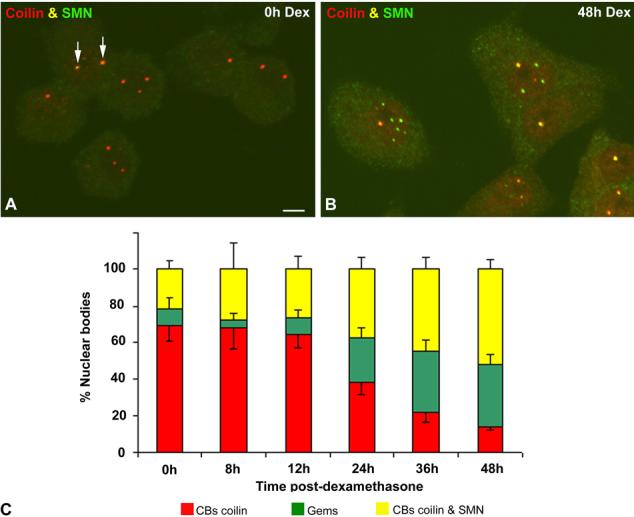Fig. 2a-c.

Differentiation of UR61 cells induces a reorganization of Cajal bodies (CBs) and accumulation of gems. Representative examples of untreated (a) and dexamethasone-treated (b) UR61 cells costained for coilin and SMN (survival of motor neurons protein product). Most nuclear foci in untreated cells contain coilin-positive and SMN-negative CBs, whereas colocalization of both signals is only observed in a few CBs (arrows). By contrast, coilin and SMN colocalize in the majority of CBs upon dexamethasone-induced differentiation. This molecular reorganization of CBs is accompanied by the accumulation of SMN-positive foci (gems). Bar represents 3 μm. c Quantitative analysis of the distribution of the three categories of nuclear bodies, coilin-positive and SMN-negative (red), coilin-positive and SMN-positive (yellow) and gems (green), confirms the progressive accumulation of SMN in CBs and nuclear gems as differentiation proceeds (data are mean ± SD)
